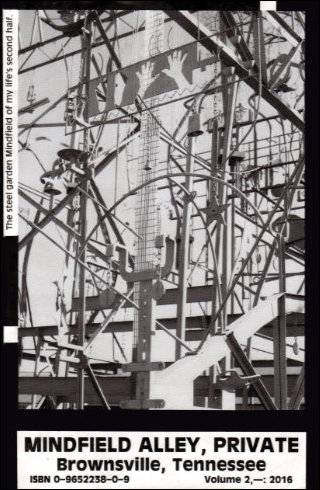 I got this book from Billy on May 7, 2015. I finished reading it on March 15, 2022. It is, as Billy himself admits and my elapsed reading time confirms, “a difficult read”. “Most people,” he says, “have understandably given up on it.” I was determined not to be like most people — no matter how long it took.
I got this book from Billy on May 7, 2015. I finished reading it on March 15, 2022. It is, as Billy himself admits and my elapsed reading time confirms, “a difficult read”. “Most people,” he says, “have understandably given up on it.” I was determined not to be like most people — no matter how long it took.
Although I never gave up on it, I obviously put it aside from time to time. Sometimes it was for a day or two and sometimes it was for weeks or months. Each pause in my reading of The Sycamore Trees basically lasted as long as I had something at hand that was not a difficult read. I believe that understanding the book’s chronology would have been difficult in any case. My many starts and stops aggravated it immensely.
 The book has been called a semi-autobiographical novel. According to Billy, it tells about his early life. “The best story I can tell in words is there if one really wants to know it”, he says. The writing style has been called stream of consciousness. In some manner, “stream of consciousness” and “semi-autobiographical” might also apply to the giant metal sculpture that is his life work. Its picture is on the book’s back cover. It is what initially made me and most others aware of Billy’s existence. When I first happened upon the sculpture in 2005, I thought its name, “Billy Tripp’s Mindfield”, might have been the title of a misplaced Beatles song, and learning that William Blevins Tripp is the artist’s real name has not entirely erased that image.
The book has been called a semi-autobiographical novel. According to Billy, it tells about his early life. “The best story I can tell in words is there if one really wants to know it”, he says. The writing style has been called stream of consciousness. In some manner, “stream of consciousness” and “semi-autobiographical” might also apply to the giant metal sculpture that is his life work. Its picture is on the book’s back cover. It is what initially made me and most others aware of Billy’s existence. When I first happened upon the sculpture in 2005, I thought its name, “Billy Tripp’s Mindfield”, might have been the title of a misplaced Beatles song, and learning that William Blevins Tripp is the artist’s real name has not entirely erased that image.
Almost from the moment I started reading The Sycamore Trees, I saw similarities not only in the artist’s approach to the sculpture and to the book but in my reaction to both. I have viewed that sculpture multiple times and always marvel at the artistry and craftsmanship in pretty much every detail. Yet, when I step back and try to take in the entire thing, I’m overwhelmed. I can appreciate and maybe even understand the parts but not the whole. I have that very same relationship with the book.
In spots, the book does seem to be an unfiltered stream of consciousness. But most of the components of that stream are reasonably constructed thoughts. There are instances of rambling that are frustrating to a reader wanting to get on with the story but, for the most part, they seem to be trying to say something in as many ways as possible rather than saying the exact same thing over and over.
There was certainly some relief felt when I turned the last page but it was not the relief of finally being done with something unpleasant. In fact, part of it may have been the relief of realizing that reading the book had not been a waste of time (which was something I’d questioned more than once while the reading was in process). This is one of the few books I’ve read where a first reading equipped me to get a whole lot more out of a second reading. I’m not going to rush into it. I’ll wait at least until my next physical. If the doctor thinks I might have another seven years in me, I just might rewind and repeat.
Like most others, this review ends with an Amazon link. There are some used copies available at reasonable prices and even a couple claims of new copies at exorbitant prices. However, if you really want a copy and can possibly get to Brownsville, TN, I recommend visiting the Mindfield and getting the book from Billy.
The Mindfield Years, Vol. 1: The Sycamore Trees, Billy Tripp, Mindfield Press (January 1, 1996), 5.5 x 8.5 inches, 736 pages, ISBN 0-9652238-0-9
Available through Amazon.
